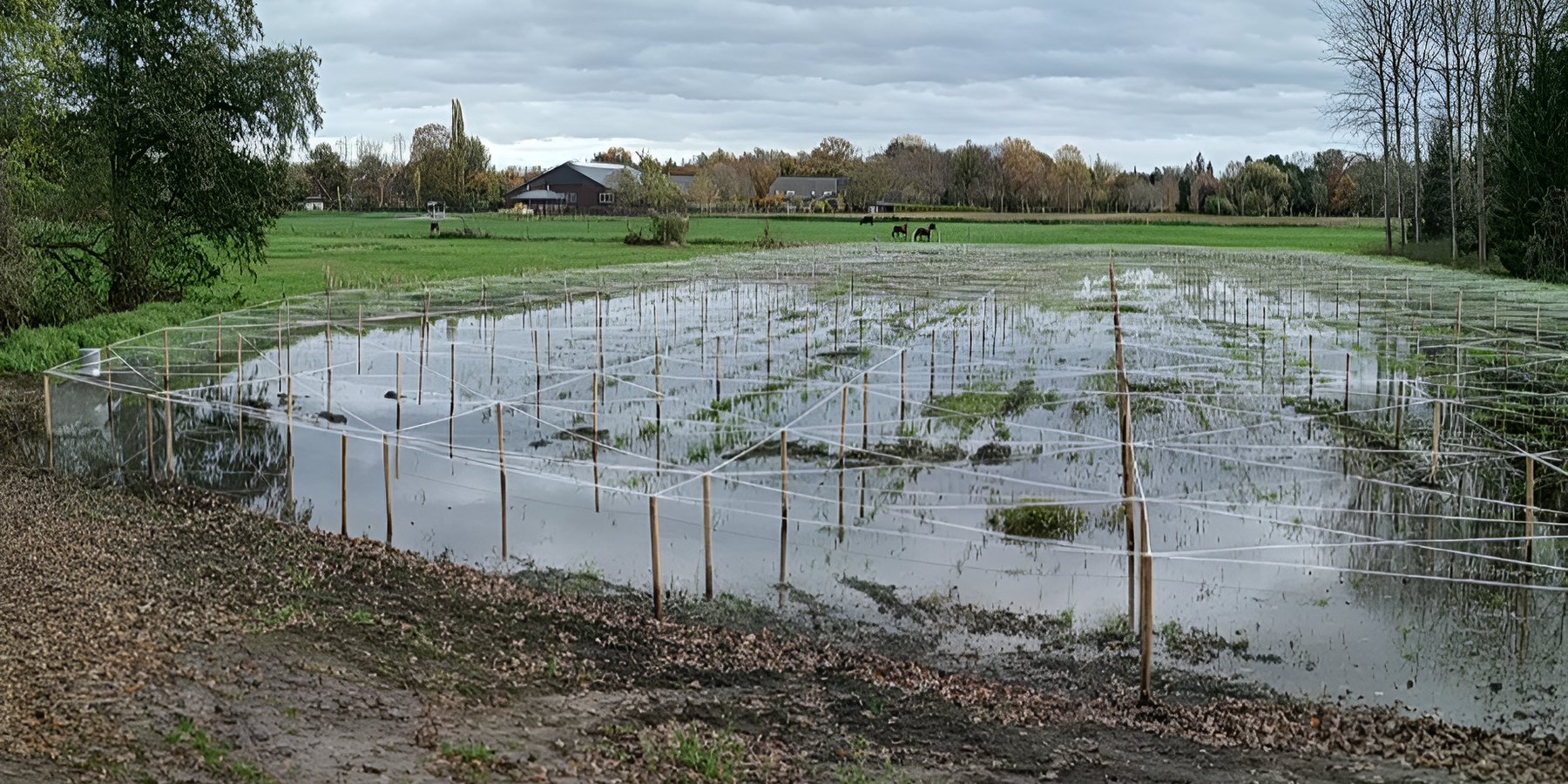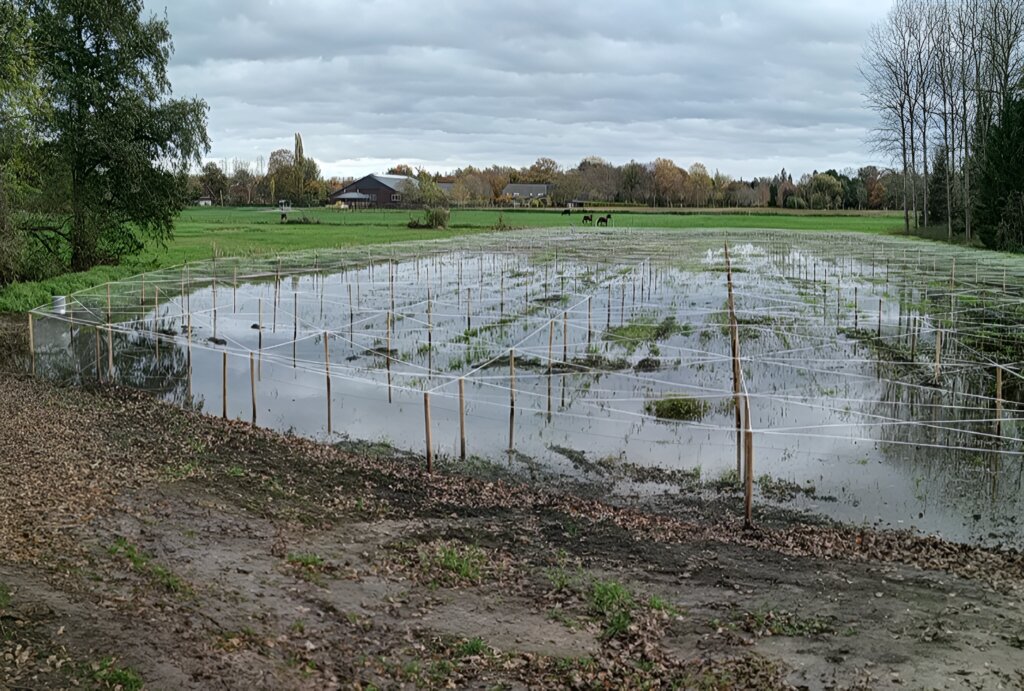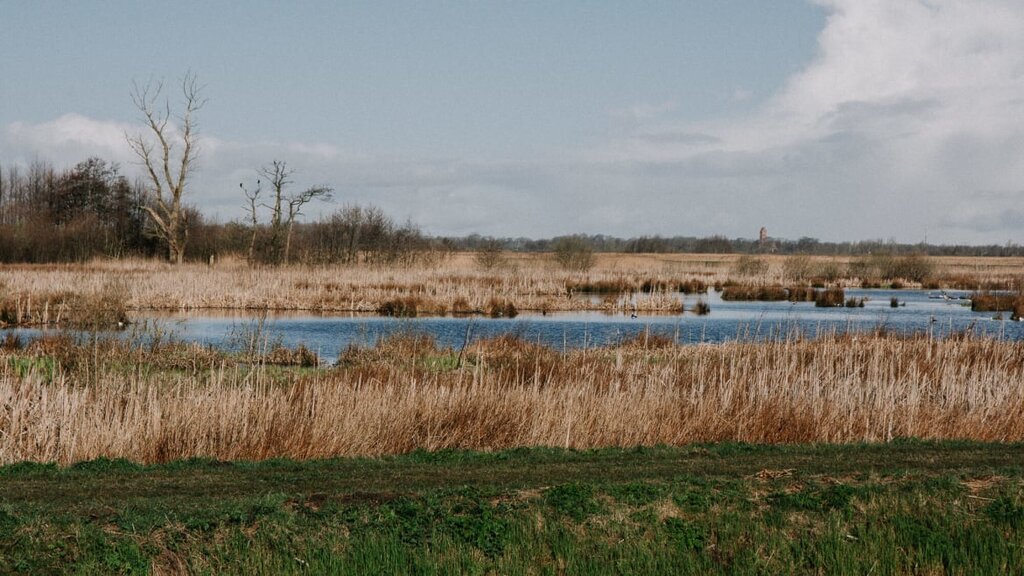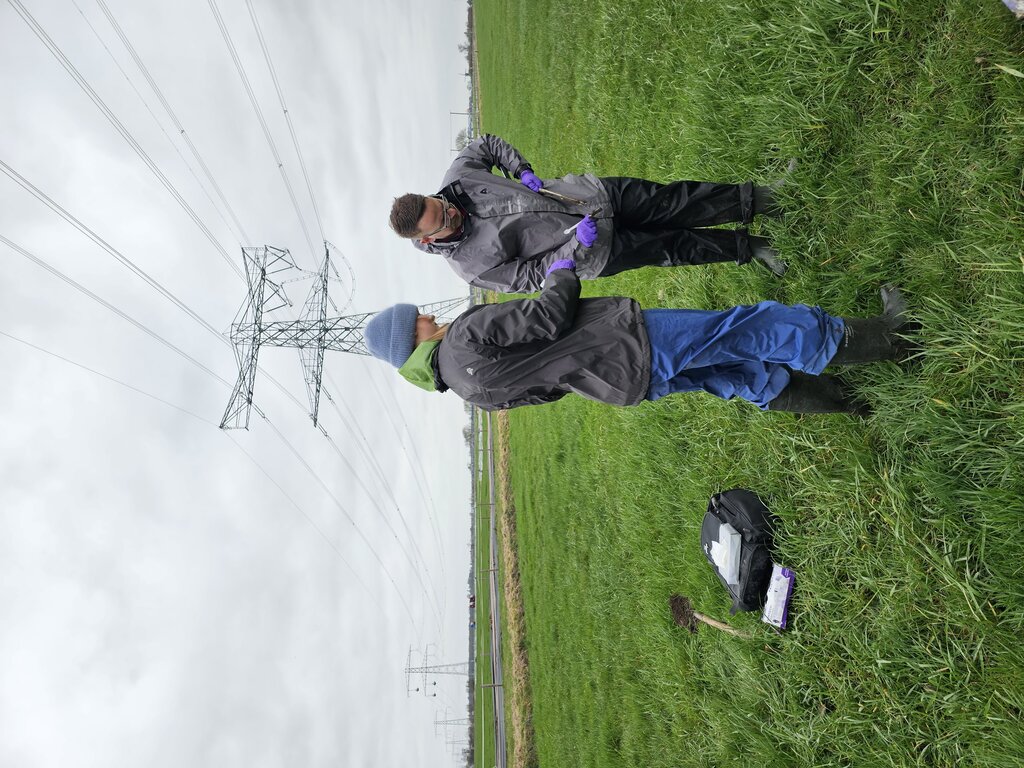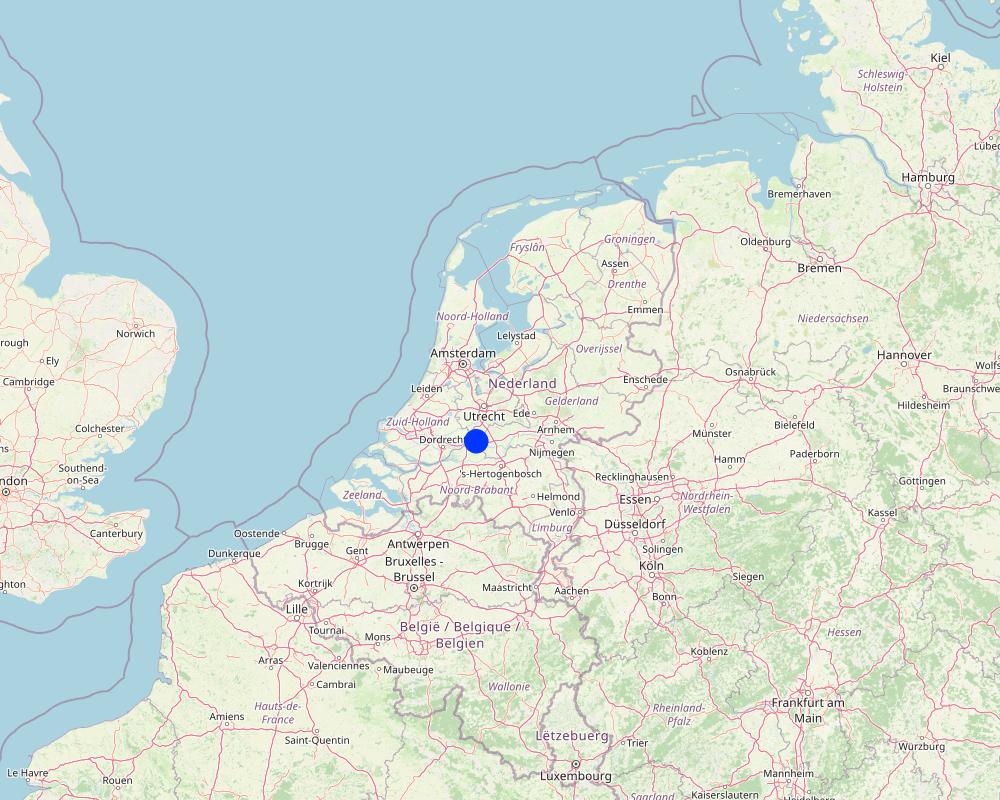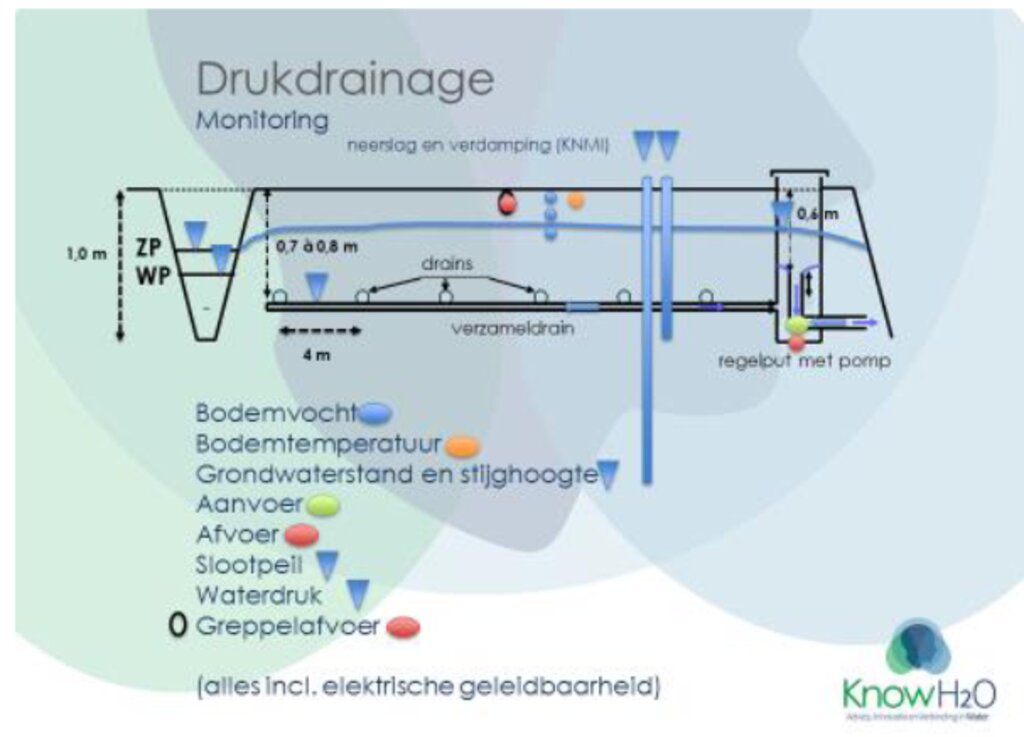Peatland Rewetting [Pays-Bas]
- Création :
- Mise à jour :
- Compilateur : William Powell
- Rédacteur : Carlos Gil Picon
- Examinateurs : Rima Mekdaschi Studer, William Critchley
Peatland Rewetting
technologies_7140 - Pays-Bas
Voir les sections
Développer tout Réduire tout1. Informations générales
1.2 Coordonnées des personnes-ressources et des institutions impliquées dans l'évaluation et la documentation de la Technologie
Personne(s)-ressource(s) clé(s)
Spécialiste GDT:
Powell William
JIN Climate & Sustainability
Pays-Bas
Nom du projet qui a facilité la documentation/ l'évaluation de la Technologie (si pertinent)
Land Use Based Mitigation for Resilient Climate Pathways (LANDMARC)Nom du ou des institutions qui ont facilité la documentation/ l'évaluation de la Technologie (si pertinent)
JIN Climate and Sustainability (JIN) - Pays-Bas1.3 Conditions relatives à l'utilisation par WOCAT des données documentées
Le compilateur et la(les) personne(s) ressource(s) acceptent les conditions relatives à l'utilisation par WOCAT des données documentées:
Oui
1.4 Déclaration sur la durabilité de la Technologie décrite
Est-ce que la Technologie décrite ici pose problème par rapport à la dégradation des terres, de telle sorte qu'elle ne peut pas être déclarée comme étant une technologie de gestion durable des terres?
Non
2. Description de la Technologie de GDT
2.1 Courte description de la Technologie
Définition de la Technologie:
Peatland rewetting is a climate change mitigation technology that involves raising and maintaining high water tables in agricultural peatland through controlled drainage. It reduces soil subsidence and CO2 emissions while preserving biodiversity. This technology offers environmental benefits but faces challenges in policy support and economic viability.
2.2 Description détaillée de la Technologie
Description:
Peatland rewetting is increasingly being applied in the Netherlands, particularly in the province of Zuid Holland, as a critical environmental management strategy. This technology is implemented in agricultural fields on peatland soil, representing an important shift in land management practices. The method can be characterised by raising and maintaining a high water table in peatland areas through the implementation and careful control of a sophisticated drainage system.
The system's technical infrastructure includes an integrated network of pipes, pumps (including innovative solar-powered options), and strategically placed ditches to control the water level. Advanced monitoring equipment is installed to track water table levels with precision, ensuring optimal management of the wetland conditions. The primary purpose of peatland rewetting is to mitigate climate change by reducing soil subsidence and consequent CO2 emissions from drained peatlands, which globally contribute around 2 Gt of CO2 annually.
Implementation requires several key components and activities. The initial phase involves comprehensive site assessment and installation of the drainage system, including careful placement of monitoring equipment and, where applicable, solar panels for sustainable pump operation. Ongoing maintenance activities are crucial and involve regular system monitoring, component repairs, and water level adjustments to maintain optimal conditions between -10 and +20 cm, as demonstrated in projects like the Swinkels case study.
The benefits and impacts of peatland rewetting are multifaceted. Primary environmental benefits include significant reduction in CO2 emissions by preventing peat oxidation, preservation of valuable peatland habitats and biodiversity, and improved regional water management. The practice also helps avoid substantial costs associated with soil subsidence, such as infrastructure repairs and dam reinforcement that would otherwise be necessary in degraded peatland areas.
From the land user's (farmer's) perspective, the transition to peatland rewetting presents both opportunities and challenges. The main benefits include access to potential subsidies, avoided costs due to soil subsidence, and the opportunity to participate in innovative agricultural practices like paludiculture - the cultivation of wet-tolerant crops such as cattail, which can be used for various applications including fodder. However, farmers may face challenges including significant initial investment costs, the necessity to adapt to new farming techniques and business models, and potential yield impacts during the transition period as they navigate the learning curve of wet agriculture.
Some environmental considerations require careful management. While peatland rewetting generally provides positive environmental outcomes, there can be challenges with nutrient leaching affecting water quality, which necessitates careful monitoring and management strategies. Additionally, stakeholders express concerns about the lack of consistent long-term subsidies and policy support for maintaining these practices, highlighting the need for more robust institutional frameworks to support sustainable peatland management.
Scientific monitoring of these sites, as demonstrated in the LANDMARC project, includes sophisticated tools such as soil sampling for physical and chemical analysis, molecular microbial identification, greenhouse gas measurements, and the use of satellite data and field mapping to track progress and impact. This comprehensive monitoring approach helps ensure the effectiveness of rewetting initiatives and provides valuable data for scaling up these solutions to national and continental levels.
2.3 Photos de la Technologie
2.5 Pays/ région/ lieux où la Technologie a été appliquée et qui sont couverts par cette évaluation
Pays:
Pays-Bas
Région/ Etat/ Province:
South Holland
Autres spécifications du lieu:
Alblasserwaard-Vijfheerenlanden
Spécifiez la diffusion de la Technologie:
- appliquée en des points spécifiques ou concentrée sur une petite surface
Est-ce que les sites dans lesquels la Technologie est appliquée sont situés dans des zones protégées en permanence?
Non
Commentaires:
There is no indication that the sites have a special protected status. The sites are active agricultural lands used for dairy farming. The peatland rewetting sites are on working farms, two organic dairy farms and one conventional dairy farm. The land is described as a permanent grassland. They are actively managed agricultural areas rather than protected natural reserves.
Map
×2.6 Date de mise en œuvre de la Technologie
Indiquez l'année de mise en œuvre:
2022
2.7 Introduction de la Technologie
- regional collaboration
Commentaires (type de projet, etc.) :
Key partners of peatland rewetting in this region include farmers, research institutes, local water authorities, and nature organizations
3. Classification de la Technologie de GDT
3.1 Principal(aux) objectif(s) de la Technologie
- réduire, prévenir, restaurer les terres dégradées
- préserver l'écosystème
- conserver/ améliorer la biodiversité
- s'adapter au changement et aux extrêmes climatiques et à leurs impacts
- atténuer le changement climatique et ses impacts
3.2 Type(s) actuel(s) d'utilisation des terres, là où la Technologie est appliquée
Les divers types d'utilisation des terres au sein du même unité de terrain: :
Non

Pâturages
Type d'animal:
- bétail - laitier
Est-ce que la gestion intégrée cultures-élevage est pratiquée?
Oui
Si oui, veuillez préciser:
The technology aims to combine peatland conservation and dairy farming. It involves both land and livestock.
Produits et services:
- lait
- grass/fodder production, carbon sequestration, water management.
Espèces:
bétail - laitier
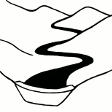
Voies d'eau, plans d'eau, zones humides
3.3 Est-ce que l’utilisation des terres a changé en raison de la mise en œuvre de la Technologie ?
Est-ce que l’utilisation des terres a changé en raison de la mise en œuvre de la Technologie ?
- Non (Passez à la question 3.4)
3.4 Approvisionnement en eau
Approvisionnement en eau des terres sur lesquelles est appliquée la Technologie:
- mixte: pluvial-irrigué
Commentaires:
There will be pressurized draining systems installed, suggesting water management beyond reliance on rainfall.
3.5 Groupe de GDT auquel appartient la Technologie
- dérivation et drainage de l'eau
- gestion/ protection des zones humides
3.6 Mesures de GDT constituant la Technologie

structures physiques
- S3: Fossés étagés, canaux, voies d'eau
Commentaires:
Drainage systems are a significant structural intervention to the landscape. The hydrology of the area is modified through engineered solutions. This technology allows for control of groundwater levels independently from ditch water levels.
3.7 Principaux types de dégradation des terres traités par la Technologie

dégradation chimique des sols
- Cn: baisse de la fertilité des sols et réduction du niveau de matière organique (non causée par l’érosion)

dégradation physique des sols
- Ps: affaissement des sols organiques, tassement des sols

dégradation biologique
- Bc: réduction de la couverture végétale
- Bh: perte d’habitats
- Bq: baisse de la quantité/ biomasse
- Bs: baisse de la qualité et de la composition/ diversité des espèces
- Bl: perte de la vie des sols

dégradation hydrique
- Hs: changement de la quantité d’eau de surface
- Hg: changement du niveau des nappes phréatiques (eaux souterraines) et des aquifères
- Hp: baisse de la qualité des eaux de surface
- Hw: réduction de la capacité tampon des zones humides
Commentaires:
The most significant issues being addressed by peatland rewetting is Ps: subsidence of organic soils, setting of soil.
3.8 Prévention, réduction de la dégradation ou réhabilitation des terres dégradées
Spécifiez l'objectif de la Technologie au regard de la dégradation des terres:
- prévenir la dégradation des terres
- réduire la dégradation des terres
Commentaires:
The primary goal of peatland rewetting is to reduce land degradation. By implementing pressurized drainage systems, the technology seeks to slow down the rate of peat decomposition and subsequent soil subsidence.
4. Spécifications techniques, activités, intrants et coûts de mise en œuvre
4.1 Dessin technique de la Technologie
Spécifications techniques (associées au dessin technique):
Schematic representation of the pressurized drainage system and monitoring setup for a peatland rewetting plot. The system includes drainage pipes at 4m intervals, a central collection pipe, control wells, and various monitoring equipment for measuring soil moisture, groundwater levels, ditch water levels, and water flows. Solar-powered pumps control water levels independently of ditch water levels. Monitoring also includes soil temperatures, biodiversity assessments, and continuous measurement of soil surface height changes.
Auteur:
Gé van den Eertwegh
Date:
2020
4.2 Informations générales sur le calcul des intrants et des coûts
Spécifiez la manière dont les coûts et les intrants ont été calculés:
- par superficie de la Technologie
Indiquez la taille et l'unité de surface:
8.4 ha
autre/ monnaie nationale (précisez):
EUR
Indiquez le coût salarial moyen de la main d'œuvre par jour:
60 EUR per hour is the estimated average cost of labour in the Netherlands
4.3 Activités de mise en place/ d'établissement
| Activité | Calendrier des activités (saisonnier) | |
|---|---|---|
| 1. | selection of test plots | Winter/Spring |
| 2. | creating drainage plans | Winter/Spring |
| 3. | obtaining permits | Winter/Spring |
| 4. | installing drainage systems | Summer |
| 5. | installing monitoring equipment | Summer |
| 6. | damming ditches | Late Summer/Early Fall |
| 7. | installing pumps | Summer |
| 8. | setting up reference plots for comparison | Full Year |
| 9. | conducting baseline measurements | Full Year |
Commentaires:
No clear data available on specific timing, however estimations are made based on the technical requirements and the climate of the Netherlands.
4.4 Coûts et intrants nécessaires à la mise en place
| Spécifiez les intrants | Unité | Quantité | Coûts par unité | Coût total par intrant | % des coût supporté par les exploitants des terres | |
|---|---|---|---|---|---|---|
| Main d'œuvre | installation | |||||
| Main d'œuvre | maintenance | |||||
| Equipements | drainage and collection pipes | |||||
| Equipements | pumps and solar panels | |||||
| Equipements | control wells | |||||
| Equipements | monitoring equipment (soil moisture sensors, etc.) |
Si vous n'êtes pas en mesure de décomposer les coûts dans le tableau précédent, donnez une estimation du coût total de la mise en place de la Technologie:
579000,0
Si le coût n'est pas pris en charge à 100% par l'exploitant des terres, indiquez qui a financé le coût restant:
There is local and national government involvement in sharing the costs. Farmers also contribute 25% of the installation costs and provide in-kind contributions through their time.
Commentaires:
The total cost of establishment and ongoing costs for the whole area of 8.4 hectares are estimated to be EUR 570000 including VAT. The breakdown is:
a. Monitoring/ analysis 44%
b. Education 2%
c. Communication 7%
d. Reporting 8%
e. Management 11%
f. Materials/ apparatus 16%
g. Drainage system including ditches 9%
4.5 Activités d'entretien/ récurrentes
| Activité | Calendrier/ fréquence | |
|---|---|---|
| 1. | ongoing monitoring of soil moisture, groundwater levels, and soil movement | |
| 2. | Management of water levels using the pumping system | |
| 3. | Maintenance of drainage pipes and pumps | |
| 4. | Data collection and analysis | |
| 5. | Ecological monitoring (biodiversity, wading birds) | |
| 6. | Grass yield measurements | |
| 7. | Soil temperature monitoring | |
| 8. | Water quality testing | |
| 9. | Reporting and communication activities |
Commentaires:
See comment under 4.4
4.6 Coûts et intrants nécessaires aux activités d'entretien/ récurrentes (par an)
| Spécifiez les intrants | Unité | Quantité | Coûts par unité | Coût total par intrant | % des coût supporté par les exploitants des terres | |
|---|---|---|---|---|---|---|
| Main d'œuvre | Systems operation and monitoring | |||||
| Main d'œuvre | Maintenance and potential replacement of equipment | |||||
| Main d'œuvre | Data analysis and reporting costs | |||||
| Main d'œuvre | ecological survey costs | |||||
| Autre | Energy costs for pumps (some are solar) |
Commentaires:
See comment under 4.4 and note that Euros 579000 (including VAT) is an estimate of both establishment AND ongoing costs
4.7 Facteurs les plus importants affectant les coûts
Décrivez les facteurs les plus importants affectant les coûts :
The most important factors affecting the costs are the installation of the drainage systems, monitoring equipment and activities, scale of implementation, types of drainage pipes, solar-powered pumping systems, project management and research activities, adaptation of surrounding water management, duration of the project, labor costs, and location-specific factors (such as the soil profile of the area of implementation).
5. Environnement naturel et humain
5.1 Climat
Précipitations annuelles
- < 250 mm
- 251-500 mm
- 501-750 mm
- 751-1000 mm
- 1001-1500 mm
- 1501-2000 mm
- 2001-3000 mm
- 3001-4000 mm
- > 4000 mm
Spécifiez la pluviométrie moyenne annuelle (si connue), en mm:
790,00
Indiquez le nom de la station météorologique de référence considérée:
statista
Zone agro-climatique
- subhumide
5.2 Topographie
Pentes moyennes:
- plat (0-2 %)
- faible (3-5%)
- modéré (6-10%)
- onduleux (11-15%)
- vallonné (16-30%)
- raide (31-60%)
- très raide (>60%)
Reliefs:
- plateaux/ plaines
- crêtes
- flancs/ pentes de montagne
- flancs/ pentes de colline
- piémonts/ glacis (bas de pente)
- fonds de vallée/bas-fonds
Zones altitudinales:
- 0-100 m
- 101-500 m
- 501-1000 m
- 1001-1500 m
- 1501-2000 m
- 2001-2500 m
- 2501-3000 m
- 3001-4000 m
- > 4000 m
Indiquez si la Technologie est spécifiquement appliquée dans des:
- non pertinent
Commentaires et précisions supplémentaires sur la topographie:
The Netherlands is flat, although the technology is applied to an area with a 1 to 3 ditches.
5.3 Sols
Profondeur moyenne du sol:
- très superficiel (0-20 cm)
- superficiel (21-50 cm)
- modérément profond (51-80 cm)
- profond (81-120 cm)
- très profond (>120 cm)
Texture du sol (de la couche arable):
- fin/ lourd (argile)
Texture du sol (> 20 cm sous la surface):
- moyen (limoneux)
Matière organique de la couche arable:
- abondant (>3%)
5.4 Disponibilité et qualité de l'eau
Profondeur estimée de l’eau dans le sol:
< 5 m
Disponibilité de l’eau de surface:
bonne
La zone est-elle inondée?
Oui
Régularité:
épisodiquement
5.5 Biodiversité
Diversité des espèces:
- moyenne
Diversité des habitats:
- moyenne
Commentaires et précisions supplémentaires sur la biodiversité:
Although these areas support some important biodiversity values, their primary current use is agricultural.
5.6 Caractéristiques des exploitants des terres appliquant la Technologie
Sédentaire ou nomade:
- Sédentaire
Orientation du système de production:
- commercial/ de marché
Niveau relatif de richesse:
- moyen
Individus ou groupes:
- individu/ ménage
Niveau de mécanisation:
- mécanisé/ motorisé
Age des exploitants des terres:
- personnes d'âge moyen
Indiquez toute autre caractéristique pertinente des exploitants des terres:
I do not have specific information available on off-farm income or the gender of the land-users, although it is well-known that 60% of Dutch farm land is family-owned.
5.7 Superficie moyenne des terres utilisées par les exploitants des terres appliquant la Technologie
- < 0,5 ha
- 0,5-1 ha
- 1-2 ha
- 2-5 ha
- 5-15 ha
- 15-50 ha
- 50-100 ha
- 100-500 ha
- 500-1 000 ha
- 1 000-10 000 ha
- > 10 000 ha
Cette superficie est-elle considérée comme de petite, moyenne ou grande dimension (en se référant au contexte local)?
- petite dimension
Commentaires:
likely to be considered small-scale
5.8 Propriété foncière, droits d’utilisation des terres et de l'eau
Propriété foncière:
- individu, avec titre de propriété
Droits d’utilisation des terres:
- individuel
Droits d’utilisation de l’eau:
- communautaire (organisé)
5.9 Accès aux services et aux infrastructures
santé:
- pauvre
- modéré
- bonne
éducation:
- pauvre
- modéré
- bonne
assistance technique:
- pauvre
- modéré
- bonne
emploi (par ex. hors exploitation):
- pauvre
- modéré
- bonne
marchés:
- pauvre
- modéré
- bonne
énergie:
- pauvre
- modéré
- bonne
routes et transports:
- pauvre
- modéré
- bonne
eau potable et assainissement:
- pauvre
- modéré
- bonne
services financiers:
- pauvre
- modéré
- bonne
6. Impacts et conclusions
6.1 Impacts sur site que la Technologie a montrés
Impacts socio-économiques
Production
production fourragère
Commentaires/ spécifiez:
Peatland rewetting aims to maintain or slightly improve grass yields
Disponibilité et qualité de l'eau
qualité de l'eau potable
disponibilité de l'eau d'irrigation
Impacts écologiques
Biodiversité: végétale, animale
diversité des habitats
Commentaires/ spécifiez:
Aims to improve biodiversity, especially for wading birds and aquatic life
Réduction des risques de catastrophe et des risques climatiques
impacts de la sécheresse
Commentaires/ spécifiez:
helps manage drought and heavy rainfall situations
émissions de carbone et de gaz à effet de serre
Commentaires/ spécifiez:
Reduces greenhouse gas emissions
Autres impacts écologiques
Potential improvement in water quality of ditches and surrounding water bodies
Précisez l'évaluation des impacts sur site (sous forme de mesures):
The implementation of peatland rewetting through raised water levels and submerged drains has shown significant reduction in greenhouse gas emissions, with measurements indicating a decrease from 19-50 t CO2 per hectare annually to approximately half those levels. While this water management approach impacts dairy farming viability, the use of innovative drainage systems has demonstrated that agricultural production can be maintained. Monitoring data shows reduced soil subsidence rates, from an average of 8 mm/year to lower rates, while also indicating potential improvements in habitat conditions for meadow birds and wetland biodiversity.
6.2 Impacts hors site que la Technologie a montrés
disponibilité de l'eau
Commentaires/ spécifiez:
Rewetting improves regional hydrology by keeping water longer in the landscape, enhancing water retention capacity.
flux des cours d'eau fiables et stables en saison sèche
Commentaires/ spécifiez:
Water retention in rewetted peatlands helps maintain more stable water flows during dry periods.
inondations en aval
Commentaires/ spécifiez:
Restored peatlands act as natural water buffers, reducing peak flows and downstream flooding risks.
pollution des rivières/ nappes phréatiques
Commentaires/ spécifiez:
Rewetting reduces nutrient runoff (particularly nitrate) into groundwater and surface waters, improving water quality.
capacité tampon/de filtration
Commentaires/ spécifiez:
Restored wetland conditions enhance the natural filtering capacity of peatlands, improving water quality in the wider landscape.
dommages sur les infrastructures publiques/ privées
Commentaires/ spécifiez:
Rewetting helps reduce soil subsidence which otherwise damages roads, buildings and other infrastructure.
impact des gaz à effet de serre
Commentaires/ spécifiez:
Measurements show significant reduction in greenhouse gas emissions, from 19-50 t CO2 per hectare annually to approximately half those levels through water management.
Précisez l'évaluation des impacts extérieurs (sous forme de mesures):
The project includes monitoring of water quality and ecology in surrounding ditches. Greenhouse gas emissions are expected to greatly decrease.
6.3 Exposition et sensibilité de la Technologie aux changements progressifs et aux évènements extrêmes/catastrophes liés au climat (telles que perçues par les exploitants des terres)
Changements climatiques progressifs
Changements climatiques progressifs
| Saison | Augmentation ou diminution | Comment la Technologie fait-elle face à cela? | |
|---|---|---|---|
| températures annuelles | augmente | pas connu | |
| températures saisonnières | été | augmente | pas connu |
| précipitations annuelles | décroît | pas connu |
Commentaires:
The prediction is more for extreme weather patterns than a decrease of rainfall overall. The technology's effectiveness may be challenged by these changes, as maintaining optimal water levels becomes more difficult as rainfall decreases. Therefore there may be an impact on this technology during extended dry periods.
6.4 Analyse coûts-bénéfices
Quels sont les bénéfices comparativement aux coûts de mise en place (du point de vue des exploitants des terres)?
Rentabilité à court terme:
négative
Rentabilité à long terme:
positive
Quels sont les bénéfices comparativement aux coûts d'entretien récurrents (du point de vue des exploitants des terres)?
Rentabilité à court terme:
négative
Rentabilité à long terme:
positive
Commentaires:
The short-term returns on peatland rewetting are negative due to their (sometimes significantly) high establishment costs. The establishment costs, however, are the highest cost associated with this technology and the long-term returns and benefits are what make the high upfront costs attractive for land-users.
6.5 Adoption de la Technologie
- cas isolés/ expérimentaux
De tous ceux qui ont adopté la Technologie, combien d'entre eux l'ont fait spontanément, à savoir sans recevoir aucune incitation matérielle, ou aucune rémunération? :
- 0-10%
Commentaires:
In this case, it was a collaborative effort
6.6 Adaptation
La Technologie a-t-elle été récemment modifiée pour s'adapter à l'évolution des conditions?
Non
6.7 Points forts/ avantages/ possibilités de la Technologie
| Points forts/ avantages/ possibilités du point de vue de l'exploitant des terres |
|---|
| Provides better control over water levels, helping to manage both drought and excess water situations |
| Potential to maintain or improve grass yields while addressing environmental concerns |
| Opportunity to contribute to reducing greenhouse gas emissions and soil subsidence |
| Points forts/ avantages/ possibilités du point de vue du compilateur ou d'une autre personne ressource clé |
|---|
| Offers a solution to reduce peat soil subsidence and associated greenhouse gas emissions |
| Improves water management and quality in the area, potentially benefiting biodiversity. |
| Provides a model for sustainable dairy farming on peatlands, balancing economic and environmental needs. |
6.8 Faiblesses/ inconvénients/ risques de la Technologie et moyens de les surmonter
| Faiblesses/ inconvénients/ risques du point de vue de l’exploitant des terres | Comment peuvent-ils être surmontés? |
|---|---|
| High initial investment costs | Provide more substantial subsidies or financial support for implementation |
| Uncertainty about long-term economic benefits | Conduct longer-term studies to demonstrate economic viability; develop compensation schemes for ecosystem services |
| Requires changes in farming practices | Provide training and support for adapting to new management techniques |
| Faiblesses/ inconvénients/ risques du point de vue du compilateur ou d'une autre personne ressource clé | Comment peuvent-ils être surmontés? |
|---|---|
| Inconsistent policy support across different water boards | Develop a united, long-term policy framework for peatland management |
| Potential for increased nutrient leaching | Implement additional measures to mitigate nutrient runoff; continue monitoring water quality |
| Limited data on long-term effectiveness | Continue monitoring and research to build a comprehensive understanding of long-term impacts |
7. Références et liens
7.1 Méthodes/ sources d'information
- interviews/entretiens avec les exploitants des terres
- interviews/ entretiens avec les spécialistes/ experts de GDT
- compilation à partir de rapports et d'autres documents existants
Commentaires:
The interviews and data collection done for these cases of peatland rewetting in the Netherlands were completed as a part of the EU-funded LANDMARC project, which went from 2020 to 2024. Most of the data collection used to fill in this questionnaire was completed in 2022 and accessed again in 2024. For specific information on this case study, the publications from LANDMARC can be referenced here: https://www.landmarc2020.eu/
7.2 Références des publications disponibles
Titre, auteur, année, ISBN:
Scientific assessment and policy analysis: peatlands and carbon flows: outlook and importance for the netherlands,A. Verhagen J.J.H. van den Akker C. Blok W.H. Diemont J.H.J. Joosten M.A. Schouten R.A.M. Schrijver R.M. den Uyl P.A. Verweij J.H.M Wösten, 2009, WAB 500102 027
Disponible à partir d'où? Coût?
Available for free from the WAB (Dutch Scientific Assessment and Policy Analysis on Climate Change)
Liens et modules
Développer tout Réduire toutLiens
Aucun lien
Modules
Aucun module trouvé


